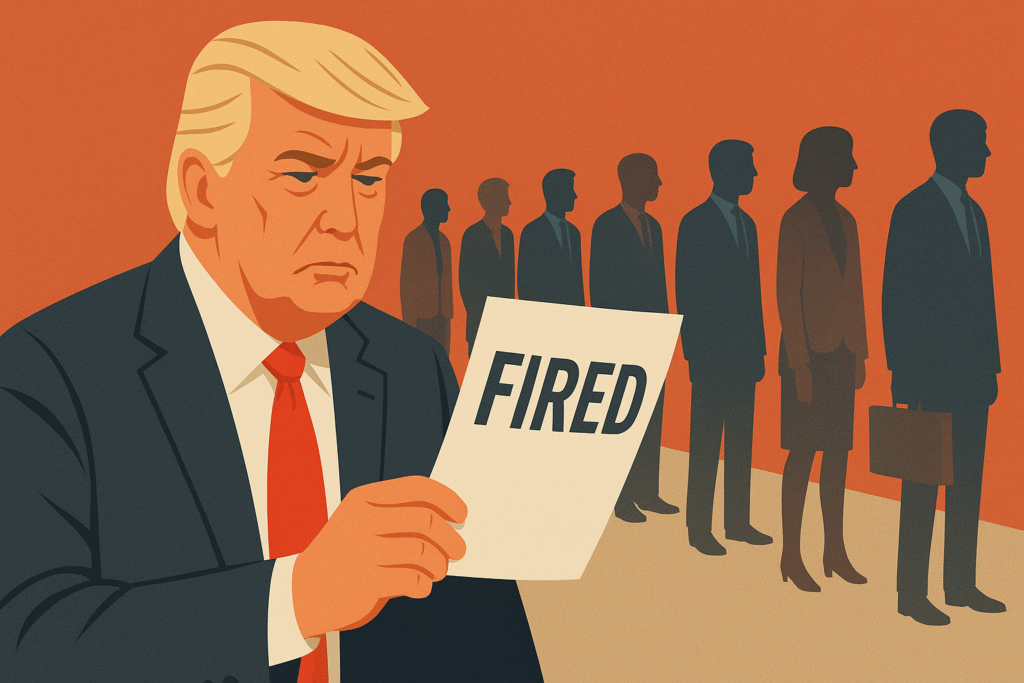The U.S. State Department has initiated the termination process for more than 1,300 employees, marking one of the most sweeping reorganizations in the department’s recent history. The move, authorized following a recent Supreme Court ruling, has drawn sharp criticism from diplomats, unions, and foreign policy experts who warn it could undermine America’s global leadership during a period of mounting international crises.
Over 1,300 Layoffs Begin
According to internal communications and the American Foreign Service Association (AFSA) — the union representing State Department personnel — the job cuts will affect 246 Foreign Service officers and 1,107 Civil Service employees, most of whom are assigned to domestic roles. Notices have already begun reaching affected employees.
Those laid off will be placed on administrative leave for 120 days, after which their employment will be formally terminated, as detailed in a memo reviewed by the Financial Times.
A “Streamlining” Effort Aligned with Trump’s Agenda
The mass layoffs are part of a broader restructuring initiative introduced by Secretary of State Marco Rubio in April. The plan aims to eliminate 15% of the department’s workforce, reduce redundancies, and align operations more closely with former President Donald Trump’s “America First” policy platform.
State Department spokesperson Tammy Bruce defended the cuts on Thursday, describing them as necessary to create a more “relevant, effective, and quick” diplomatic agency.
The internal memo stated that the layoffs focus on “non-core functions, duplicative or redundant offices, and areas where efficiencies can be achieved through consolidation.” The cuts will not affect Foreign Service personnel deployed overseas.
Critics Warn of National Security Risks
The decision has sparked widespread backlash. In a statement, AFSA condemned the firings, warning that they come at a dangerous moment for U.S. foreign policy.
“At a moment of great global instability — with war in Ukraine, tension in the Middle East, and the rise of authoritarian regimes — the United States has chosen to gut its frontline diplomatic workforce,” the statement read. “We oppose this decision in the strongest terms.”
Tom Yazdgerdi, a senior Foreign Service officer and president of AFSA, noted that the department was already severely understaffed.
“Even during the previous administration, with more favorable budgets, we were stretched thin, particularly overseas. If we want to compete with countries like China — who have no trouble staffing embassies and opening new ones — we need more, not fewer, diplomats.”
New Layoff Criteria Break with Tradition
One of the most contentious aspects of the reduction in force is the departure from traditional merit-based criteria for staff retention. Rather than evaluating individual performance, language skills, or diplomatic experience, layoffs are being determined primarily by office assignment and perceived alignment with the administration’s strategic direction.
“We looked at the functions being performed, not the individuals,” a senior State Department official explained. “The offices targeted were identified in consultation with Congress as being out of sync with our streamlined priorities.”
This marks a significant shift in personnel policy, raising concerns among current and former officials about fairness and long-term institutional capacity.
Supreme Court Clears the Way
The layoffs come days after the Supreme Court lifted a previous injunction issued by a federal judge in May, which had temporarily halted the administration’s broader plan to cut jobs across 20 federal agencies. With the court’s green light, the White House is now expected to move forward with additional cuts across multiple departments.
Broader Effort to Shrink Federal Workforce
The State Department layoffs are part of a larger government-wide effort, driven by Trump’s Department of Government Efficiency (Doge), to eliminate tens of thousands of federal positions. Critics argue the cuts threaten essential programs tied to national security, global health, and America’s international alliances.
While the administration insists the changes are needed to modernize and streamline federal operations, opponents maintain that they could severely degrade U.S. diplomatic capacity, particularly at a time when international coordination is more critical than ever.
The restructuring represents a profound shift in how America manages its diplomatic corps, one that could reshape its global posture for years to come. Whether the move achieves greater efficiency or inflicts lasting damage remains to be seen.



